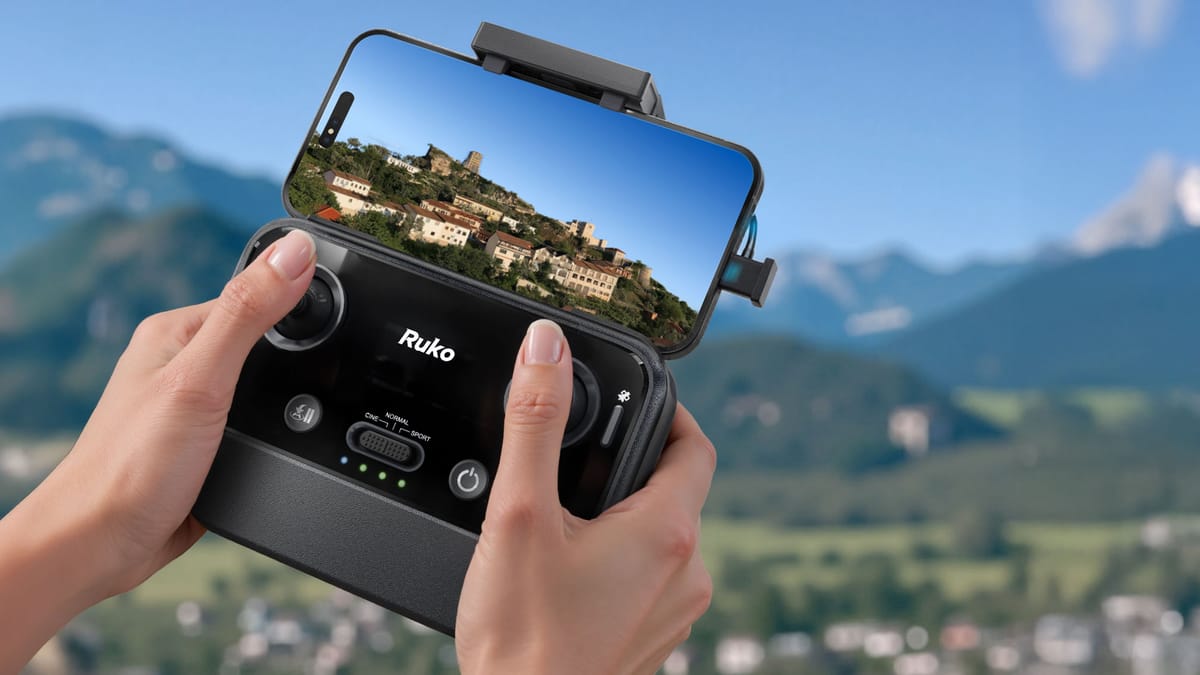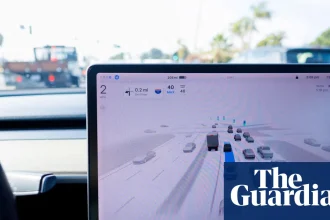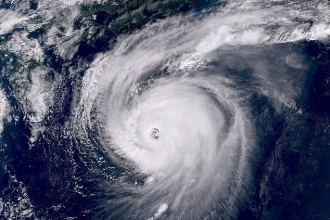Image Credit: Techloy
Drones have become the go-to tool for capturing the kind of shots you simply can’t get from the ground, sweeping landscapes, tight cityscapes, or cinematic flyovers that bring a whole new perspective. But while the idea of flying a drone is exciting, size and complexity most time get in the way. That is where DJI’s Mini series found its sweet spot: sophisticated cameras packed into tiny, lightweight, and easy-to-carry planes.
Now, with the release of the Mini 5 Pro, DJI has added new layers to that formula. On the surface, it looks almost identical to the Mini 4 Pro, but closer inspection reveals smarter safety features, a larger sensor, more storage, and performance tweaks that matter once you’re actually in the air.
So, if you’re deciding between the Mini 5 Pro and the Mini 4 Pro, the real question is how much those upgrades change the flying and filming experience. Let’s find out.
1. Design and Build
Both drones share the classic Mini look, with folding propellers for easy portability. The Mini 5 Pro is slightly heavier (249.9g vs. under 249g) than the Mini 4 Pro, but it manages a smaller unfolded footprint.
The neat trick? You can power it on or off simply by folding or unfolding the right rear arm, a small but clever upgrade over the Mini 4 Pro’s standard power button.
Winner: Mini 5 Pro (smarter design improvements).
2. Camera Sensor and Photo Quality
This is where the Mini 5 Pro really shines. It has a larger 1-inch CMOS sensor that captures 50MP images, compared to the Mini 4 Pro’s 1/1.3-inch CMOS and 48MP.
That improvement gives the Mini 5 Pro a low-light detail and overall clarity boost.
Winner: Mini 5 Pro (larger sensor, better low-light performance).
3. Video Performance
Both drones handle 4K/60fps video, but the Mini 5 Pro ups the ante with 4K/120fps, HDR, for slow motion, compared to the Mini 4 Pro’s 4K/100fps. Add 14 stops of HDR dynamic range and 10-bit colour with higher ISO flexibility, and the Mini 5 Pro is the clear upgrade for creators.
Winner: Mini 5 Pro (smoother slow-mo, stronger HDR).
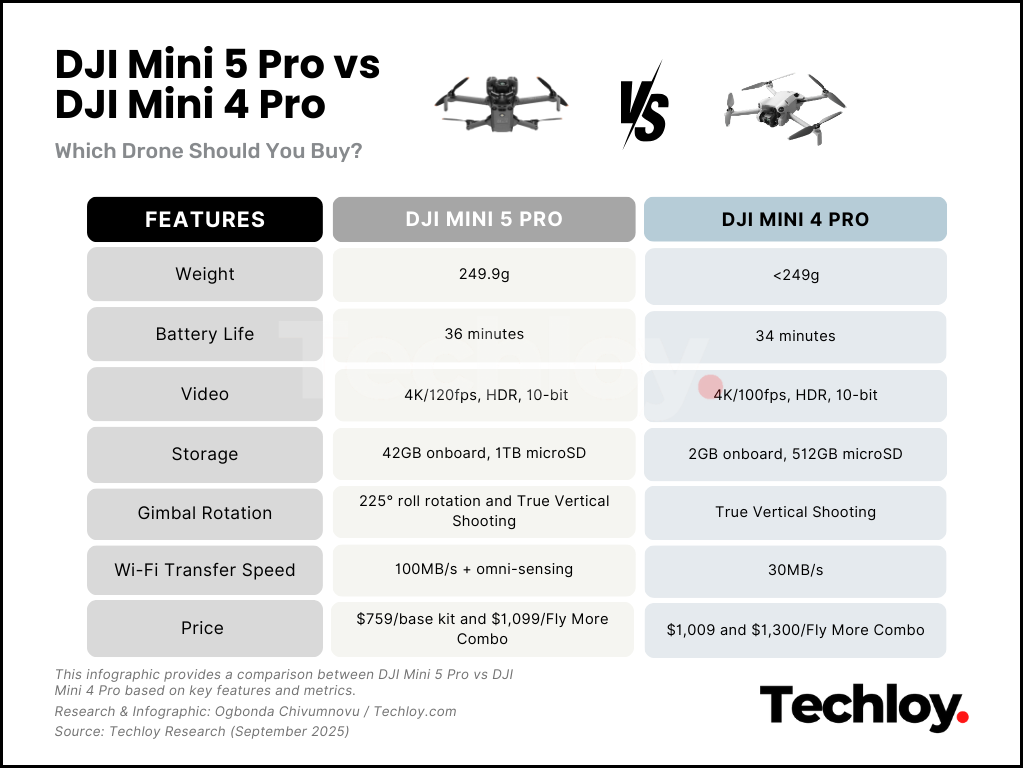 Image Credit: Techloy
Image Credit: Techloy
4. Price
Mini 4 Pro has been on the market for longer, so it’s easier to find in most regions and can include bundle discounts. Officially, the base kit starts at around $759, and the Fly More Combo costs approximately $1,099.
The Mini 5 Pro is newer and slightly harder to find, depending on your region. In the UK, Fly More Combos range between $1,009 and $1,300 depending on the controller and the store. In some areas, it’s not officially available through DJI’s own store, which may limit purchasing options.
Winner: Mini 4 Pro (more affordable and widely available).
5. Storage and File Transfers
Here’s a massive leap. The Mini 5 Pro offers 42GB onboard storage versus just 2GB on the Mini 4 Pro. It also supports microSD cards of up to 1TB (Mini 4 Pro supports up to 512GB) and offers fast Wi-Fi file transfers at 100MB/s (Mini 4 Pro only achieves 30MB/s).
Winner: Mini 5 Pro (huge storage boost).
6. Safety and Obstacle Sensing
The Mini 4 Pro introduced omnidirectional obstacle sensing, but the Mini 5 Pro takes it a step further with forward-facing LiDAR. This feature enhances obstacle detection at night or in very low light, making nighttime flights significantly safer.
Winner: Mini 5 Pro (LiDAR makes a real difference).
7. Flight Time and Performance
The Mini 5 Pro flies for 36 minutes on a standard battery, compared to 34 minutes on the Mini 4 Pro. It’s also faster (18 m/s vs 16 m/s top speed) and more wind resistant (12 m/s vs 10.7 m/s).
At altitude, the Mini 5 Pro can take off from 6,000m, while the Mini 4 Pro caps at 4,000m.
Winner: Mini 5 Pro (better flight duration, better performance).
8. Battery Life
Both drones stay under the 250g threshold with the standard Intelligent Flight Battery, but the Mini 5 Pro edges ahead. It manages 36 minutes of flight time, compared to 34 minutes on the Mini 4 Pro. It’s a small difference, but in practice, those extra two minutes can mean the difference between wrapping up your shot or rushing a landing. The Plus batteries boost endurance even further, though they’re not available everywhere (like in the UK and EU).
Winner: Mini 5 Pro (longer flights, more efficient use of power).
9. Wi-Fi Transfer Speed
The Mini 4 Pro supports wireless transfers at 30MB/s, which is fine for casual use but slow if you’re offloading lots of 4K video. The Mini 5 Pro massively improves this, offering 100MB/s transfers, cutting waiting times significantly for creators who need to move large files fast.
Winner: Mini 5 Pro (faster transfers save time for serious creators).
10. Gimbal and Shooting Modes
Both support vertical shooting, but the Mini 5 Pro introduces 225° gimbal rotation for creative camera angles and dynamic footage. It makes a noticeable difference for TikTok, Instagram Reels, or cinematic shots.
Winner: Mini 5 Pro (more creative flexibility).
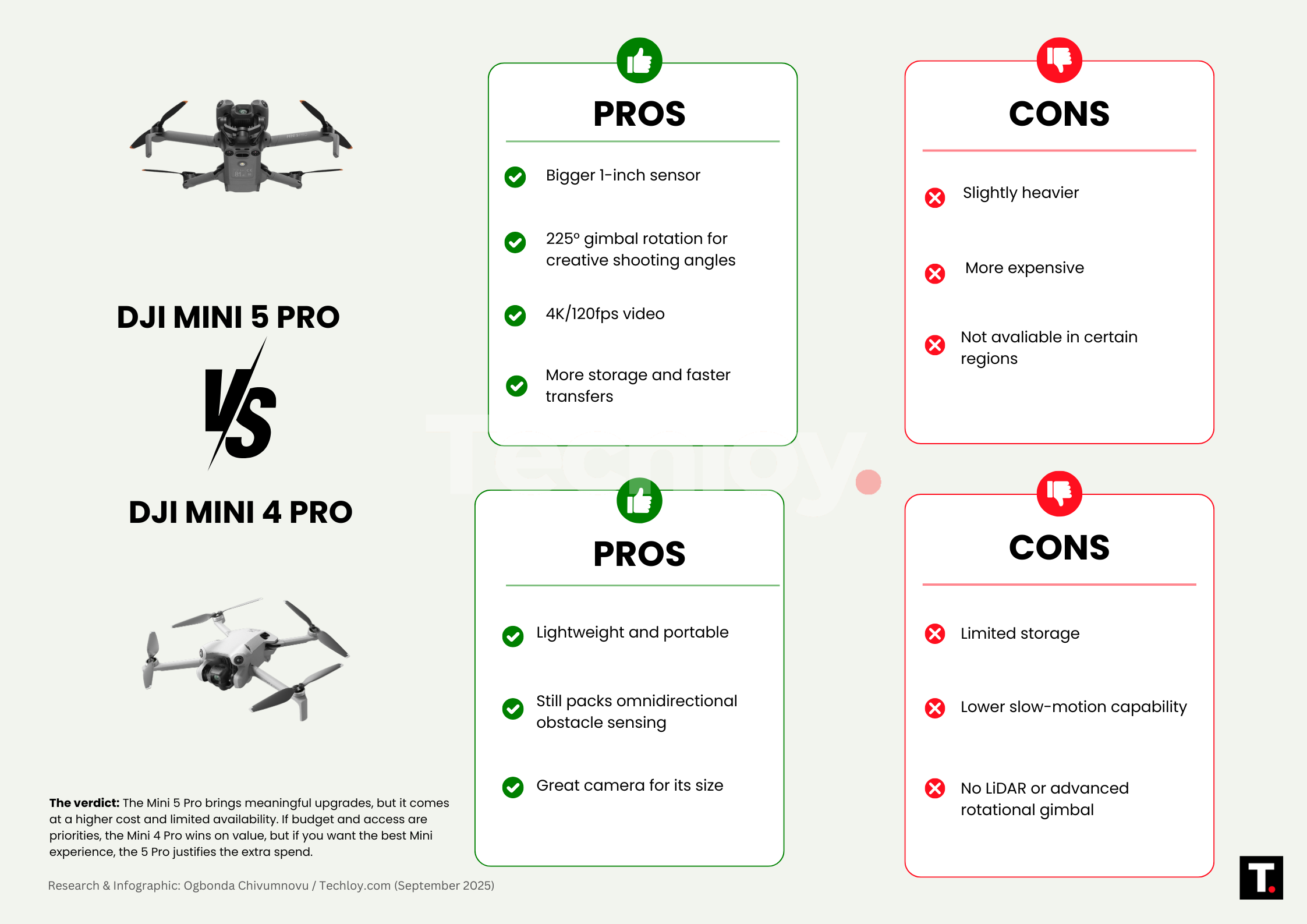 Image Credit: Techloy
Image Credit: Techloy
Conclusion
The DJI Mini 4 Pro is still an excellent light drone, but the Mini 5 Pro is a big step. From the larger sensor and improved video to smarter safety features and bigger storage, it raises the bar for ultra-portable drones. If you already own a Mini 4 Pro and are serious about content creation, the upgrade makes sense. And if you’re buying your first drone, the Mini 5 Pro is an easy recommendation, it’s the most powerful Mini DJI has ever made.
How to Get Started with the Ruko U11MINI 4K Pocket Drone: A Beginner’s Guide
Start simple, keep safety in mind, and soon your camera roll will be full of shots you didn’t think were possible from such a compact drone.
